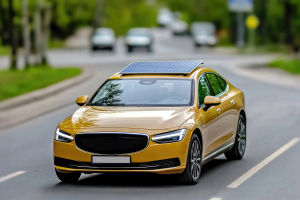Have you ever wondered if carpooling is truly an effective way to help the environment? While it's often promoted as a green alternative to solo driving, the environmental impact of carpooling can be more complex than it seems.
Let's explore the advantages and potential downsides of carpooling to get a clearer picture.
What Is Carpooling?
Carpooling involves multiple people sharing a single vehicle to commute or travel together. This practice aims to reduce the number of cars on the road, lower traffic congestion, and minimize overall fuel consumption and emissions. Carpooling can happen informally among friends or through organized programs and apps that connect commuters with similar routes.
Environmental Benefits of Carpooling
The most obvious advantage of carpooling is that fewer vehicles are needed to transport the same number of people. By reducing the total number of cars on the road, carpooling cuts down carbon dioxide (CO2) emissions, a key contributor to climate change. Studies show that if just 10% of drivers started carpooling regularly, the reduction in greenhouse gases could be substantial. Additionally, fewer cars mean less wear on roads and decreased pollution from vehicle manufacturing.
Lower Fuel Consumption and Emissions
Carpooling optimizes fuel use by spreading the environmental cost of driving among passengers. Instead of each person driving separately, sharing a ride means the fuel consumption and emissions per person are significantly lower. This efficiency makes carpooling especially valuable in urban areas where traffic jams and stop-and-go driving increase fuel use and pollution.
Economic and Social Benefits
Beyond environmental advantages, carpooling saves money on fuel, parking fees, and vehicle maintenance. It also promotes social interaction and community building among participants. These benefits encourage more people to consider carpooling, indirectly supporting environmental goals through behavioral change.
Potential Environmental Drawbacks
Despite its benefits, carpooling isn't always a perfect solution. One downside is "deadheading" — when the car must drive extra distances to pick up or drop off passengers, increasing total mileage and emissions. In some cases, detours or waiting times can add to fuel consumption, offsetting the environmental gains.
Impact of Vehicle Type
The environmental impact of carpooling depends on the vehicle used. Sharing a ride in an older, less fuel-efficient car or an SUV produces more emissions than in a hybrid or electric vehicle. Therefore, the choice of vehicle affects whether carpooling truly reduces overall emissions.
Challenges in Organizing Effective Carpools
For carpooling to deliver maximum environmental benefits, it requires careful coordination. Mismatched schedules, routes, or passenger numbers can reduce efficiency. In some areas, lack of safe or convenient meeting points discourages participation. Without good planning, carpooling may not significantly cut emissions and could even cause inconvenience.
Alternative Solutions to Complement Carpooling
Other green commuting options, such as electric buses, bike-sharing, and telecommuting, can amplify the benefits of carpooling. Combining these strategies helps reduce dependency on private vehicles and leads to cleaner urban environments.
Final Thoughts: Is Carpooling Worth It?
Carpooling presents a clear opportunity to reduce emissions and fuel consumption, but its effectiveness depends on how it is implemented. Have you tried carpooling before? What benefits or challenges did you notice? Your experiences matter in shaping a more sustainable future.


